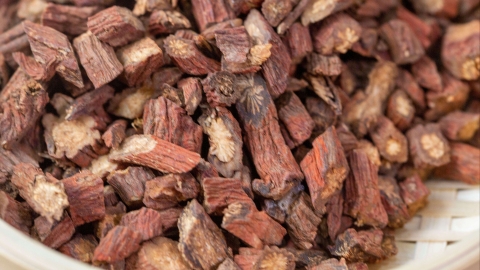Can Salvia miltiorrhiza be used together with Cornus officinalis?
Generally, Salvia miltiorrhiza and Cornus officinalis can be used together in most cases to achieve synergistic effects. However, if a patient's constitution is unsuitable or there is a potential drug interaction, these two herbs should not be used together. If in doubt, it is recommended to consult a healthcare professional in advance. Detailed analysis is as follows:

Salvia miltiorrhiza has functions including promoting blood circulation and removing blood stasis, regulating menstruation and relieving pain, clearing heat to relieve irritability, cooling blood to reduce abscesses and sores. Cornus officinalis can nourish the liver and kidney, consolidate and astringe bodily fluids, strengthen the heart, lower blood lipids, and exert anti-inflammatory and antibacterial effects. When patients require treatment involving blood activation, liver and kidney nourishment, or calming the mind, Salvia miltiorrhiza and Cornus officinalis can be used together.
However, patients with yin deficiency and excessive internal heat or damp-heat constitution should not use Cornus officinalis, as it is relatively warm in nature and may exacerbate symptoms such as yin deficiency fire hyperactivity or damp-heat. If a patient is taking other medications, especially those that may interact with either Salvia miltiorrhiza or Cornus officinalis, they should also use these herbs cautiously under the guidance of a physician to avoid adverse drug reactions.
When using Salvia miltiorrhiza and Cornus officinalis together, it is important to follow medical instructions and use the correct dosage and method to avoid adverse reactions caused by overdose or improper usage.
References
[1] Pan Xuege. Studies on the Chemical Constituents and Bioactivities of Traditional Chinese Medicines Cornus officinalis and Salvia miltiorrhiza [D]. Beijing University of Chinese Medicine, 2018.
[2] Zhang Yanyan, Huang Yigang. Research on the Bioactivities of Cornus officinalis [J]. Modern Food, 2024, 30(20): 76-78.






